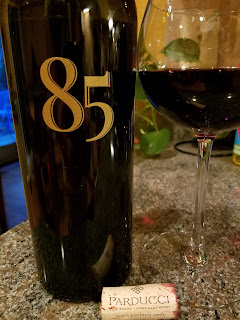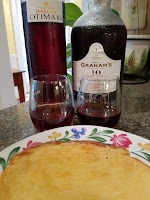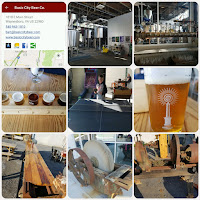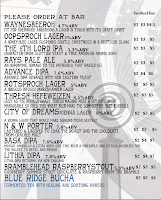 Mendocino's longest running winery, Parducci Wine Cellars, opened 85 years ago this year. Now part of the Mendocino Wine Company consortium, the winery was founded by John Parducci and his family in 1932 - a year before the 21st Amendment was ratified. During that year of prohibition, 14 year old John rode alone on a rail car delivering grapes to home winemakers. Eventually he would become head winemaker at Parducci in 1940 while championing Zinfandel and Petite Sirah: "two grapes that would become a signature of Mendocino County". In 1994 Mr. Menodcino retired and in 1997 current winemaker Bob Swain was hired in his current capacity.
Mendocino's longest running winery, Parducci Wine Cellars, opened 85 years ago this year. Now part of the Mendocino Wine Company consortium, the winery was founded by John Parducci and his family in 1932 - a year before the 21st Amendment was ratified. During that year of prohibition, 14 year old John rode alone on a rail car delivering grapes to home winemakers. Eventually he would become head winemaker at Parducci in 1940 while championing Zinfandel and Petite Sirah: "two grapes that would become a signature of Mendocino County". In 1994 Mr. Menodcino retired and in 1997 current winemaker Bob Swain was hired in his current capacity.
In honor of the winery's 85th Anniversary, Swain crafted the Special Cuvee 85 ($45) a blend of Cabernet Sauvignon (69%), Merlot (18%), Petit Verdot (8%), and Cabernet Franc (5%). He chose the Cabernet Sauvignon and Merlot in order to recognize John Parducci's expertise in making reserve wines from these grape varieties and the other two to celebrate Parducci use of estate grapes. The fermented wine is aged in various oak regimens including some new American oak. The wine is fantastic dark fruit throughout, a bit spicy, but ah so smooth,
 The winery is also celebrating their True Grit series with a release of a three wine vertical of the 2004, 2005, and 2006 Petite Sirah vintages. Priced at $50, these wines are or were available DTC or in the tasting room on a limited basis. You don't get a chance to taste through a 10+ year old vertical and these wine show that Petite Sirah, the John Wayne of Wines, age nicely. The 2006 (92% Petite Sirah, 4% Grenache, 2% Syrah) was my favorite as it was still vibrant with a leathery plum aroma, slight spices, and a smooth and still acidic tail. Delicious. The 2005 (92% Petite Sirah & 8% Grenache) was also bright with solid fruit and acidity with spices enveloping the finish. And the 2004 (97% Petite Sirah & 3% Viognier) still had legs. Although the aroma is flatter, there is still sold fruit and enough acids to lift the tail. Not bad for a 13 year old wine. Swain and Parducci Wine Cellars prove that if you have the patience to cellar their Tru Grit Petite Sirah - it's well worth the effort.
The winery is also celebrating their True Grit series with a release of a three wine vertical of the 2004, 2005, and 2006 Petite Sirah vintages. Priced at $50, these wines are or were available DTC or in the tasting room on a limited basis. You don't get a chance to taste through a 10+ year old vertical and these wine show that Petite Sirah, the John Wayne of Wines, age nicely. The 2006 (92% Petite Sirah, 4% Grenache, 2% Syrah) was my favorite as it was still vibrant with a leathery plum aroma, slight spices, and a smooth and still acidic tail. Delicious. The 2005 (92% Petite Sirah & 8% Grenache) was also bright with solid fruit and acidity with spices enveloping the finish. And the 2004 (97% Petite Sirah & 3% Viognier) still had legs. Although the aroma is flatter, there is still sold fruit and enough acids to lift the tail. Not bad for a 13 year old wine. Swain and Parducci Wine Cellars prove that if you have the patience to cellar their Tru Grit Petite Sirah - it's well worth the effort.
Finally, Mendocino County is part of the devastating Redwood Complex Fire and I wanted to share a Parducci Facebook post:
From the Redwood Complex Fire in Mendocino and Lake Counties, South to Sonoma and Napa we have employees, family and friends that have been impacted by these devastating fires. We are thinking of all of the communities affected. We hope everyone is safe and our thoughts and strength are with you. While many of our employees have been under mandatory evacuation or gravely affected by the fires, we can confirm that we are all safe.
Thank you to all of those fighting the fires and helping those who have lost so much. We want to express our gratitude to the heroes within our local community, throughout California, and even across the nation that came to fight the Redwood Complex Fire in Mendocino county. They truly are lifesavers.
We are doing what we can to help locally, providing shelter and resources for displaced families and animals. The tide is thankfully turning as containment increases on all fronts, but the road to recovery will be a long one. Many devastated families and communities will rely on help to rebuild. If you would like to help, you may make a donation of any size to the following community organizations. 100% of the donations go to those in need.
Thank you for being such a long-standing customer of ours, we appreciate you.• Disaster Fund for Mendocino County - www.communityfound.org
• Napa Valley Community Foundation - www.napavalleycf.org
• Sonoma County Resilience Fund - www.sonomacf.org










